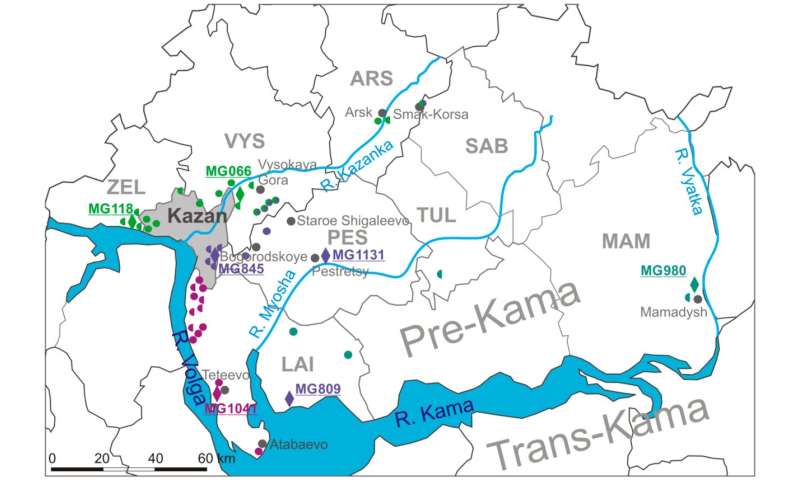Biologists study geographical origins of hemorrhagic fever with renal syndrome in Tatarstan

A publication saw light in International Journal of Molecular Sciences.
The research is a part of a grant Russian Science Foundation-funded project titled 'Identification of immunogenic peptides to diagnose infections caused by orthohantaviruses'; the grant supervisor is Head of the Gene and Cell Technologies Lab, Professor Albert Rizvanov.
He explains, "Hemorrhagic fever with renal syndrome, also known as mouse fever, is one of the more widespread zoonotic infectious diseases in Russia. Every year, there are several thousand cases, and several hundred of them are located in the Republic of Tatarstan. Here, the virus is caused by Puumala orthohantavirus carried by bank vole, a rodent inhabiting forests all across the province."
Humans get infected by inhaling dust with particles of feces or urine of a bank vole. Kidneys are the most affected organ, and in some cases the infection can be lethal. Vaccines are currently under development.
The grant supervisor continues, "Complications in producing a vaccine stem from the Puumala virus' fast-changing genome. Eight genetic strains have been determined as of now, and each of them has dozens and even hundreds variations of the genome. The variability of the Puumala virus segmented genome is caused by local changes in nucleotides and reassortment, i. .e. exchanges of segments between different genomes of the virus."
KFU and Kazan Research Institute of Epidemiology and Microbiology (KRIEM) have long been cooperating in studies of the Puumala virus genome.
"In particular, it was determined that genomes of bank voles from the Cis-Kama region have a certain grouping. One such group can be found in the Kazanka River valley, and another in the Myosha River valley. Such groups of genomes have been found in many patients admitted to the Republican Clinical Infection Hospital in 2019, which allowed to determine approximate regions of infection. Furthermore, new genome variants representing mixes of Kazanka and Myosha groups were found in five patients," says Rizvanov.
The latter variants have not yet been found in rodents in nature. So this not only helps in finding where the ailing individuals were infected but also allows to predict the presence of new strains in nature.
After analyzing the data, the team determined two areas where infectivity is the highest; they are both located on the watershed of the Kazanka and Myosha rivers. A map of hemorrhagic fever strains in the province can thus be outlined, which can help in predicting epidemiological threats.
"We showed that the genome can assist in tracing the origins of this or that patient's infection on the map. Such research can help in determining dangerous areas with heightened risks of infection. This can also allow for a more effective epidemic prevention and assist doctors in finding more dangerous strains of the virus in patients," concludes the interviewee.
More information:
Puumala Orthohantavirus Reassortant Genome Variants Likely Emerging in the Watershed Forests
www.mdpi.com/1422-0067/24/2/1018
Provided by Kazan Federal University